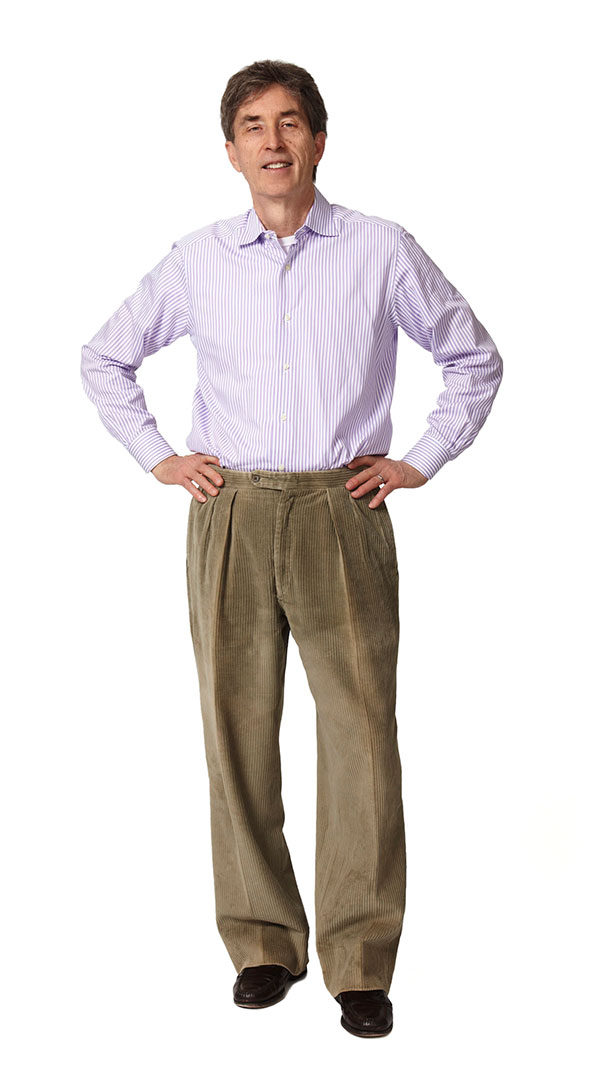 David Hemenway, Ph.D., is the director of the Harvard Injury Control Research Center (HICRC), which studies youth violence and the impact of firearms, and a professor of health policy at the Harvard School of Public Health. He has written a number of books, including Private Guns, Public Health, which describes the public health approach to reducing firearm violence. His most recent book is While We Were Sleeping: Success Stories in Injury and Violence Prevention.
David Hemenway, Ph.D., is the director of the Harvard Injury Control Research Center (HICRC), which studies youth violence and the impact of firearms, and a professor of health policy at the Harvard School of Public Health. He has written a number of books, including Private Guns, Public Health, which describes the public health approach to reducing firearm violence. His most recent book is While We Were Sleeping: Success Stories in Injury and Violence Prevention.
You refer to gun violence as a public health issue. What do you mean?
The public health approach to problem solving focuses on prevention instead of who is at fault. An example we use is the progress made in motor vehicle safety since the 1950s. Public health experts looked at what caused motor-vehicle-related injuries — steering columns, lack of safety glass, no seatbelts or airbags, and roads lined with trees and lampposts. We tried to make cars and roads safer and change the norms about drunk driving and speeding. Today, nobody thinks people drive better, yet fatalities have fallen 85 percent per mile driven.
How do guns in the home relate to suicide?
Research indicates that a gun in the home by far increases the likelihood that someone in the home will die of suicide. So many suicides are spontaneous, and guns are so lethal. The most common form of attempted suicide is overdosing on pills, but in those instances the fatality rates are 2 or 3 percent. Guns increase suicide fatality rates by 90 percent.
Most suicide prevention efforts focus on why a person attempts suicide. It’s become increasingly clear that how a person attempts suicide plays a key role in their survival. We’ve started the Means Matter campaign with the mission of reducing suicidal people’s access to lethal means of suicide.
In the wake of mass shootings like the one at Sandy Hook Elementary School, should behavioral warning signs be license to remove an individual’s access to guns?
As with Means Matter, we want to promote the idea that we can reduce suicides and gun violence by making guns less available to people going through difficult periods. This is not taking away guns, it’s changing social norms. If someone is going through a rough patch, it should be common that they give up guns for a while. Gun shops and firing ranges should have the training not to sell or rent guns to someone who is clearly troubled.
Does peer pressure play a role in youth firearms use?
Yes. We do studies in the inner city. Kids there say they carry guns because they are afraid. The overwhelming majority of inner-city teens would like it to be impossible for teens like them to get guns. But that’s not the world we live in.
Some parents think the guns in their home are safe from kids, or don’t ask about guns in other homes their children visit.
We’ve done studies in which pediatricians have asked parents and children separately about the children’s knowledge of and experience with guns in the home. Just like parents don’t think kids know where the Christmas presents are hidden, the same is true for guns. When questioned, the parents said they didn’t think their kids knew there were guns at home. But one-third of the boys responded that they had already played with these hidden guns.
What are the most effective measures to protect children from guns?
We need to apply what we’ve learned from cars — we have to figure out ways to live with guns and employ different measures to make them safer.
For a typical family, it’s best not to have a gun. If you have one, lock it securely. You want child-safe guns, just like you have child-safe aspirin bottles. A common occurrence with teens is they take out the magazine in a semiautomatic and think it’s unloaded. But there can be a bullet left in chamber. So make it so that if you take the magazine out of a gun, it won’t fire. Simple fixes can save lots of lives.
Your research indicates that more guns equal more violence. But gun control opponents claim that guns don’t kill people, people kill people.
People without guns don’t shoot people; people with guns do. Ideally, you want to figure out ways to get people to not kill. But it’s hard to change people. So, using the motor vehicle example, we find it’s easier to change the guns or the environment.
What legislation would reduce firearms violence?
One feasible thing is universal background checks. I would like us to look at every other developed country. They all do much better than us with regard to firearm deaths, accidents and homicides. Some of these countries have strong gun control laws; others, less so. We have the most permissive, weak gun-related laws.
I’d like to have national gun licenser system, so that to have a gun, you have to be a good citizen. We have a strong gun licensing system and strong gun laws in Massachusetts. If police know you’re a drunk or a violator, you don’t get a license. But most murderers could pass a Brady background check.












